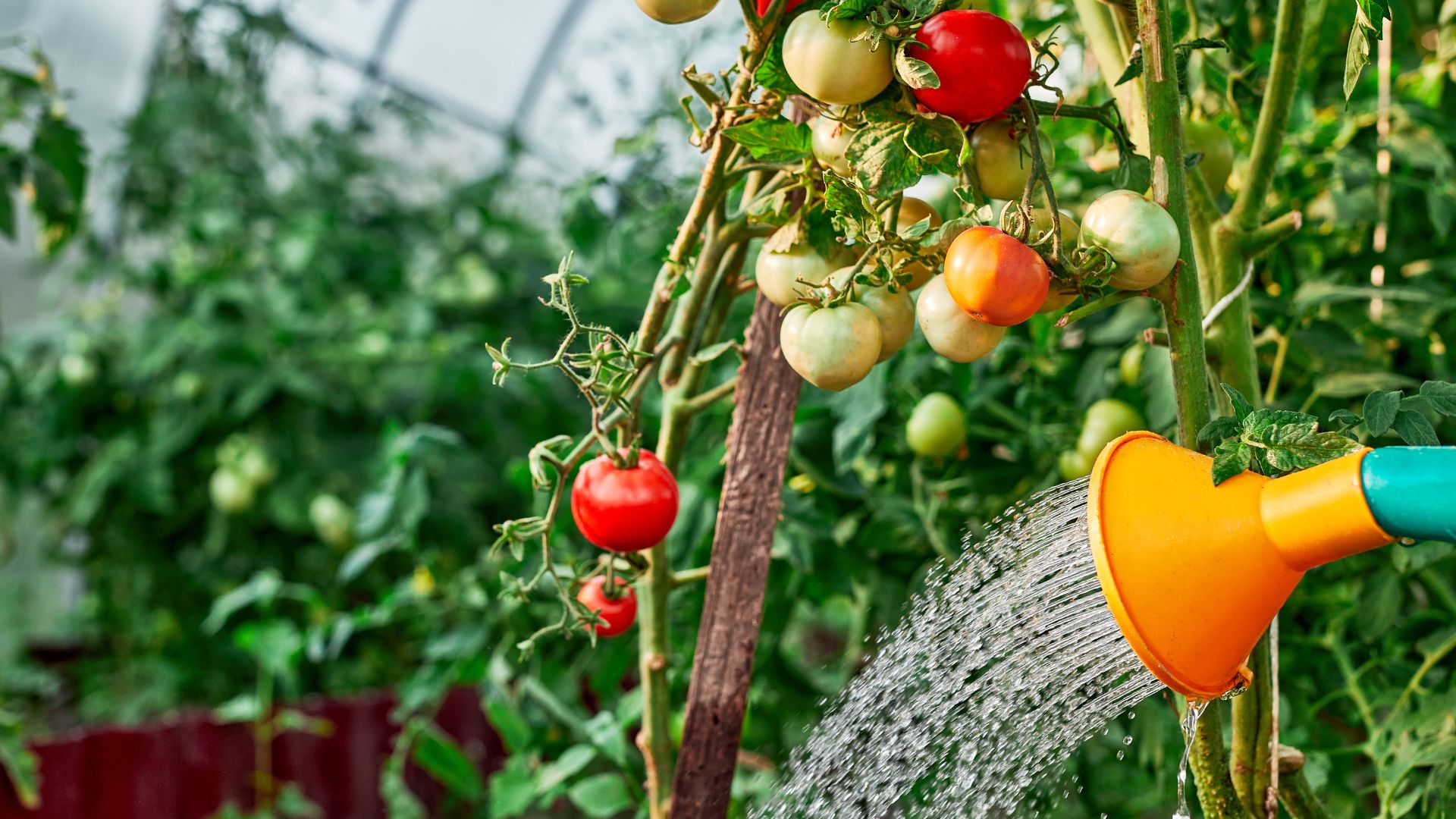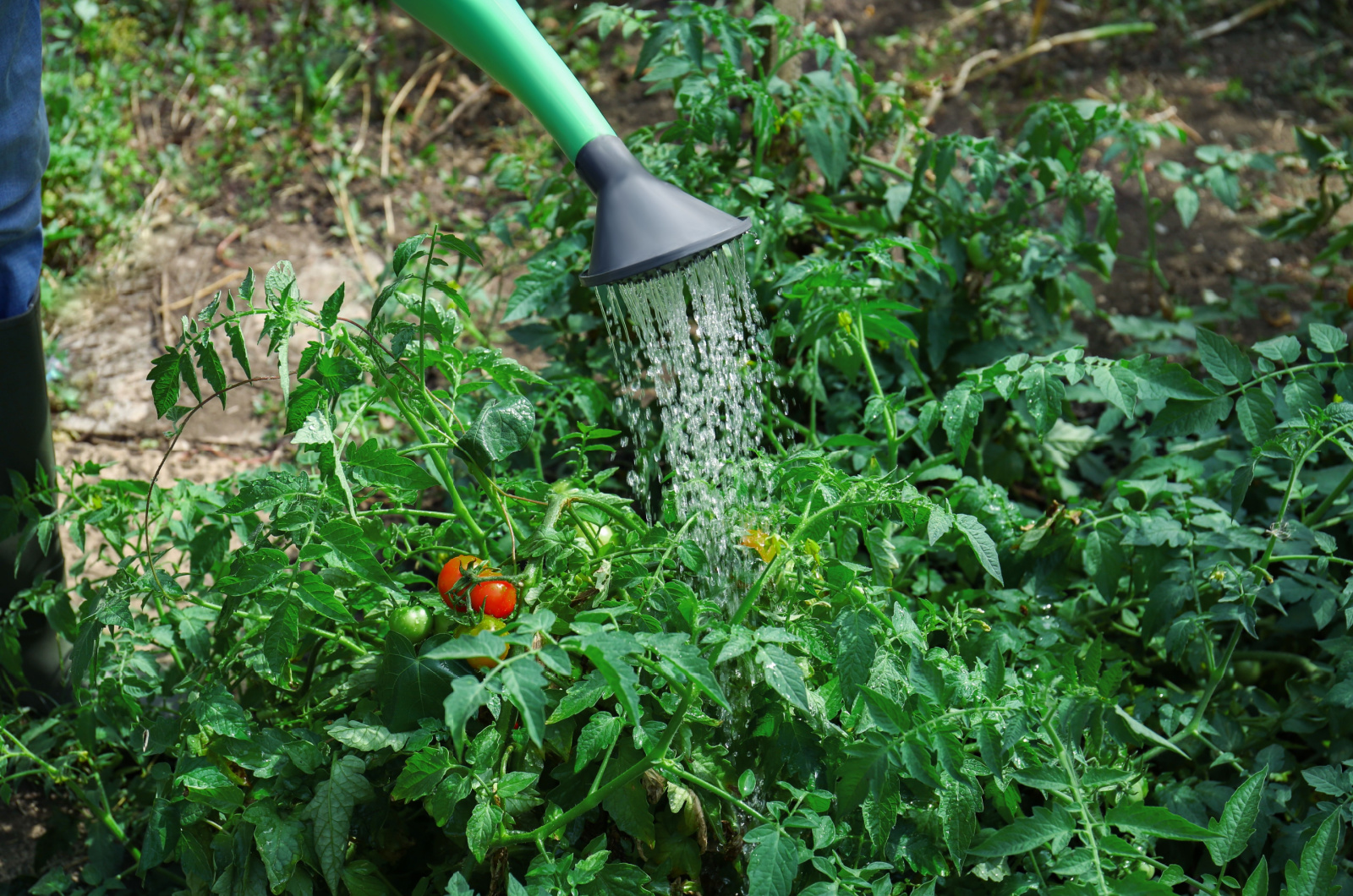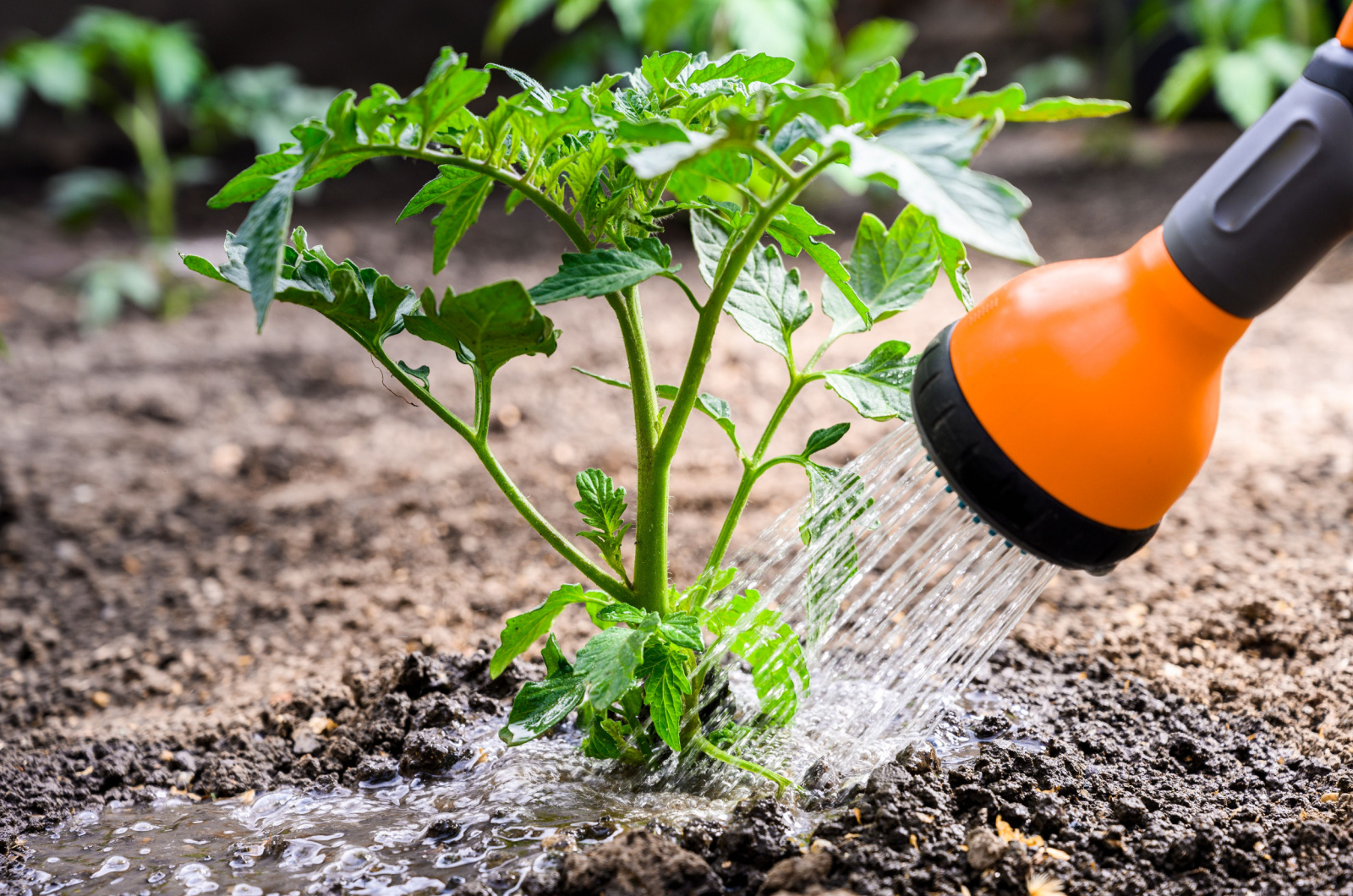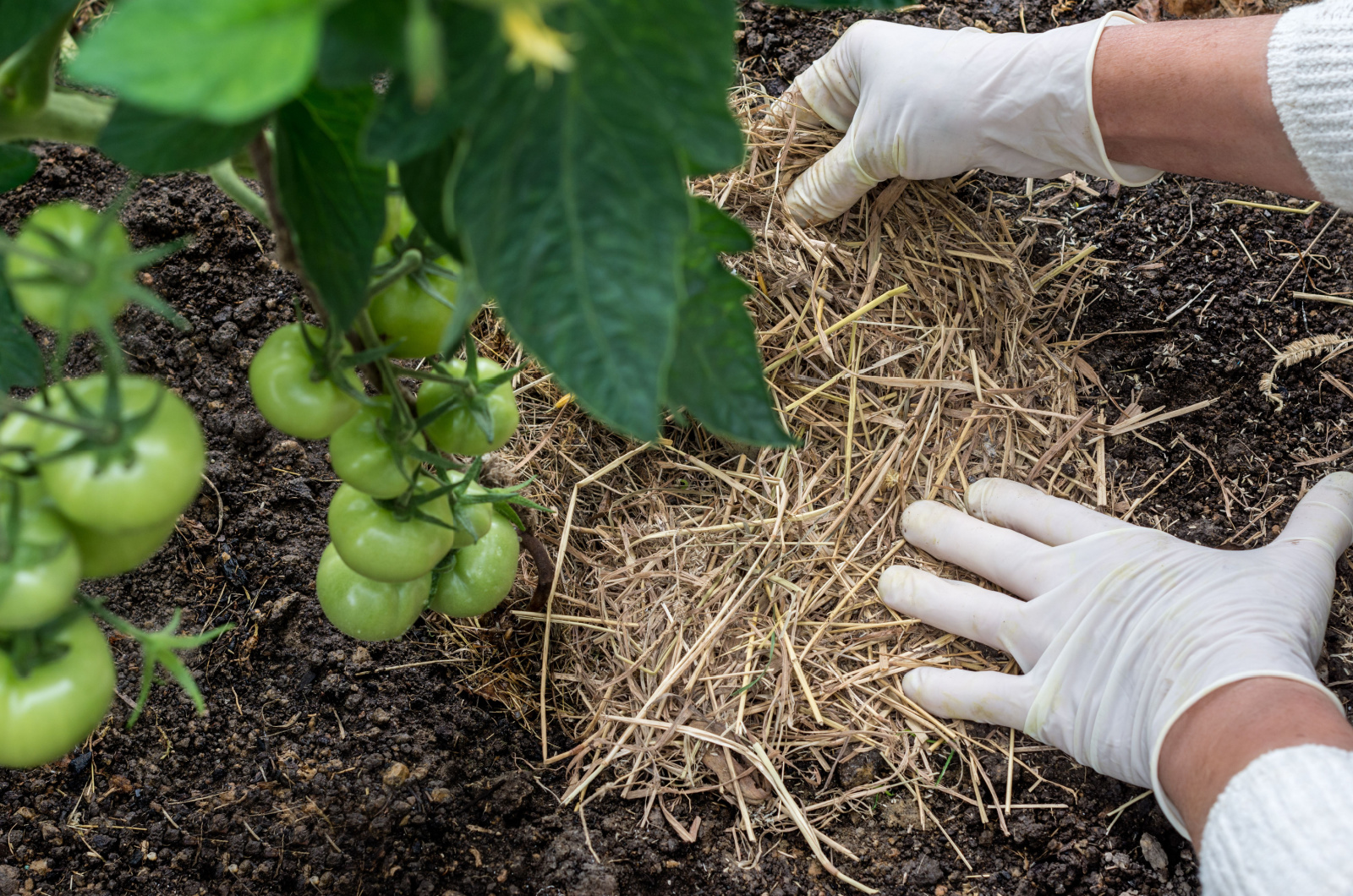Did you know that your tomato harvest may not be as large, or the fruit as sweet, as it has the potential to be? And the reason is improper watering technique!
If you don’t keep these plants properly hydrated, they won’t set nearly as many blooms. Their roots can dry out and shrivel, making it harder (or even impossible) to draw out nutrients and moisture from the soil.
And if you add too much, the roots will swell, leading to the same inability. They may also suffer from root rot – a disease that can destroy your entire crop.
So what can you do? Look at your plants, listen to what they have to say, and act accordingly.
Let’s get started!
Signs Of Inadequate Tomato Watering
One of the simplest strategies to get more tomatoes is to water them properly. And the key to getting this right is understanding the signs of over and underwatering.
Two of the clearest symptoms of underwatering are drooping stems and wilting foliage. And if you don’t water your tomato then, the leaves will begin to curl and turn brown and crispy. Eventually, the foliage will fall off.
And if you’ve overwatered your tomatoes (which is hard, but can be done), you’ll notice the bottom leaves starting to turn yellow. The bloated roots lose their function and can’t absorb nutrients and moisture properly, resulting in this discoloration.
The plant will begin to droop because the roots can’t absorb water and its growth will slow down.
If you grow your tomatoes in the ground, you shouldn’t rely on the soil surface. It can look sunbaked, but the substrate around the roots may be moist enough. Irrigating tomatoes at this point will lead to overwatering, and you risk root rot if you keep doing it.
The Best Way To Water Tomatoes
So, how do you know when to irrigate tomatoes? You can check the soil with a moisture meter, which will allow you to avoid over and underwatering your plants.
But you can’t just pour water on your plants whenever you feel like it. Take precipitation and the time of day into account before irrigating your tomatoes.
Here’s some tips to help you out!
When To Water Tomatoes
Tomatoes generally need 1-2 inches of moisture per week to stay healthy. And that includes precipitation as well as supplemental irrigation.
This means you don’t have to water your tomatoes at all if there’s been extensive rain during the week. And if you do have to irrigate your plants, you should know when exactly to do it.
The worst times to water any plant are midday and nighttime, so make sure to avoid those. That’s because the moisture will either quickly evaporate or accumulate at the roots, leading to under or overwatering.
Instead, water your tomatoes early in the morning or in the evening to keep them hydrated properly.
Just make sure to monitor overall weather conditions. If you live in an arid climate that doesn’t receive plenty of rainfall, you will need to irrigate your tomatoes frequently.
And if you live in a region with scorching summers, you might need to apply more than 2 inches of water per week.
Also, in-ground plants require less moisture than tomatoes grown in containers or raised garden beds.
So how can we know the frequency and quantity of water we need to give tomatoes when there are so many variables to look out for? It’s easy! By checking the soil moisture.
How To Check Moisture Properly
Just looking at the soil surface won’t tell you much about the true moisture. The surface may be cracked and bone dry, and the substrate still moist underneath. On other hand, the ground may look well-saturated and be dry 6 inches below the surface.
It’s important to understand that surface moisture doesn’t matter; it’s what’s at the root level that counts.
You can check the deep-soil moisture by inserting a skewer and pushing it down into the substrate. If it comes out with dirt on it, there’s enough water in the soil. And if it’s dry, you can water your plants.
Another way to check substrate moisture is by using a moisture meter. They’re fairly inexpensive now and can give you an exact reading on what’s going on in the growing medium.
Insert the meter about 6-8 inches into the ground, and if it reads anywhere between 45-75%, you don’t need to irrigate your tomatoes. If it’s lower than that, water them, and if it’s higher, allow the soil to dry out because it means you’ve overwatered your plants.
Use the moisture meter for all your plants and water them correctly. 3-in-1 devices can even tell you the soil pH and the sun exposure your plants get, which can be very helpful for beginner gardeners.
How To Water Tomatoes Efficiently
The key to watering your tomatoes successfully every time is to do it slowly and at ground level.
Avoid overhead watering because that will wet the leaves, increasing the risk of powdery mildew and mold. Splashing the water everywhere can disturb the soil and transfer spores (such as blight) onto your other plants.
Instead, irrigate the tomatoes at the base of the plant to deliver moisture straight to the roots. If you need any numbers, I’d say about a half a gallon for younger plants and a gallon for mature ones should be enough.
Just don’t forget about the precipitation you got during the week and will get in days following the watering.
Also make sure to irrigate your plants slowly. This technique allows soil to soak in moisture and delivers it right to the root zone. Fast watering can cause the water to drain off far away from the roots.
And the deeper you deliver moisture into the substrate, the deeper the roots will grow to look for it. Deep roots are essential to healthy plants as they can support their weight better and have more access to necessary minerals and other resources.
Mulch The Plants
And the last thing that can help you water your tomatoes perfectly is mulching. Spreading a layer of organic mulch 4-5 inches thick around your tomatoes will slow down evaporation from the soil.
Use straw, grass trimmings, wood chips, or shredded leaves and spread them in a foot-wide diameter for the best results.
Doing this will reduce your watering chore because the substrate will retain more water. Mulching can also help maintain soil temperature, preventing it from getting too hot or too cold on particular days.
It can also help suppress weed growth, so you won’t have to weed out nearly as much. Adding a thick layer of mulch will keep the soil-borne spores in the soil, preventing them from splashing onto the plants when watering.





